Vacationing with kids: Travel hacks for babies, teens and everybody in between
Traveling with kids presents challenges that grow and change along with your children. No sooner do they outgrow those cumbersome car seats and strollers than you are weighed down by the dilemma of what to do after they bed down at 7 p.m. — and then they become teenagers, and you have to manage what they’re up to when they’re out of your sight. But family trips are also wonderful. They pay off in triplicate: They are exciting to look forward to (involve grade-schoolers and teens in the planning); engaging and fun to experience; and wonderful to remember.
And they reawaken parents to the wonder of things seen through their children’s eyes. At 4, my daughter Alissa, on her first snorkel outing in Hawaii, put her face in the water, then shot up excitedly yelling, “There’s fish in there!” Amazed, she kicked and floated as we pulled her along on her boogie board.
Alissa, an adult now, fondly remembers the rainbow-colored fish, but only my husband and I recall the flight the day before. When turbulence shook the plane, my daughter turned her head to the left and upchucked all over the man sitting next to her. A grandfather and gracious, he told me not to worry as I handed him sheet after sheet of wet wipes.
I learned that a sense of humor always helps — as does a near endless supply of wet wipes.
Babies
The main issues in traveling with infants are trying to sync their schedule with your adult vacation wishes and coping with the fact that little ones, like rock bands, travel with a ton of gear. Lowering expectations about how much to see, booking condominiums and cabins for space and kitchen, and making some creative sleeping accommodations pulled us through this stage.When Alissa was 7 months old, we rented a two-bedroom cabin in the West Virginia woods. Our son Matt, then 10, taught us how to skip rocks, Alissa cooed at the gurgling stream and our golden retriever loped along. It was idyllic until bedtime when Alissa, unaccustomed to the cabin’s porta-crib, fussed, whined and woke every hour, finally rising at 5 a.m. for breakfast. I warmed baby food and a bottle for her and brewed coffee for myself, thankful that I had stocked the kitchen.
To lessen your first day’s run-around at your destination, you can ask your hotel or condo management company to stock your unit with diapers, wipes and tot food; or mail these items ahead of time if your accommodation will store them; or place an order with Jetsetbabies.com or other similar service that will box and ship these necessities to your lodging.
By 18 months, Alissa could sleep anywhere as long as she was prone. When we craved an adult dinner — defined as one served after 5:30 p.m. — we requested a corner table in the restaurant, spread a well-padded baby blanket on the floor and put Alissa on top of it. (Noise never bothered her or Matt because we always put them to sleep with music). As she grew, we came up with what we called “the two chairs trick”; she slept on two chairs placed side-by-side at our table.
How else to mesh your baby’s needs with yours? Make their nap time your couple time.
Friends we know always visited parks, zoos and museums in the morning, ate lunch out, then returned to their hotel in the early afternoon for their son’s nap. While he dozed, the couple engaged in what they dubbed “pantomime sex,” a soundless, don’t-wake-the-baby version. (Conversation is another option.)
Elementary-schoolers
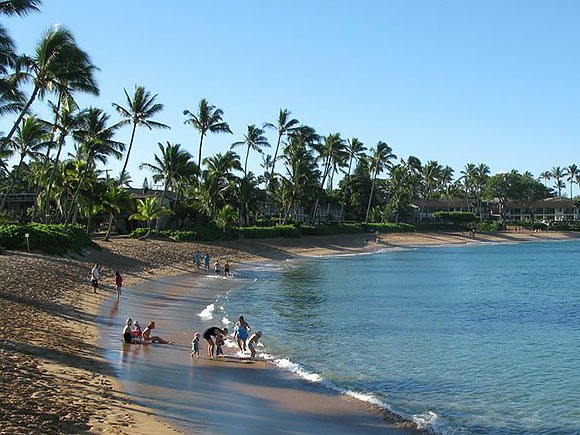 © Candyce H. Stapen Photography
© Candyce H. Stapen Photography Once your children can walk, tote backpacks and tell you what they like — or, more often, dislike — vacationing together is less harried. Youngsters 5 through 10 are often the easiest group to please. Three rules help: Balance children’s wishes with yours. Remember that you can’t see and do it all. Be flexible.
When we were on vacation at a hotel, in a rental property or at a resort, we would leave in the morning for our hike, museum visit, raft trip or whatever, sometimes packing a picnic lunch. Our goal: Be back by 3 p.m. so that everyone can relax — children at the pool, usually, and the rest of us on lounge chairs watching them splash.
Keep in mind that while these may be the peak wonder years, they are also the peak tchotchke-acquisition years. Before a trip, establish a budget with your children for souvenirs and try to stick to it: You will be sorely tested. I have the snowglobe collection to prove it.
Adapt to your children’s changing preferences with as much grace as possible. While waiting in line for an impressionist show at New York’s Metropolitan Museum of Art, Alissa, then 5, glimpsed a painting with a dog in another gallery. The impressionist canvases, woefully short on canines, didn’t interest her. My disappointment in check, we zipped past Monet and Degas so we could count the dogs in the 18th-century hunting scenes.
When Matt was 6, I took him on an evening art-gallery tour in Taos, N.M.; tired and grumpy, he got too close to the expensive sculptures and the gallery manager asked us to leave. I learned not to delay his bedtime for my sake.
Visiting theme parks, especially Disney World, is practically a rite of passage for American grade-schoolers. These can be great vacations, but I found I had to plan them like a military invasion — carefully and in detail. Ask your children to list their must-sees, map the locations and create a route. Download the Disney Experience app and use Fast Pass + to schedule certain ride times and dinners.
Staying on the property helps because it comes with special access to areas of the park ahead of the general public, and it’s easy to return to your hotel for that all-important afternoon nap — yours — and to let your children swim, read and rest. After an early dinner, go back to the park for the evening parades, shows and festivities.
Family-oriented resorts, dude ranches and cruises also offer creative children’s programs and family experiences.
A cruise ship engages youngsters with waterparks, a literal boatload of other children to hang out with and free pizza. Because many cruise lines allow children 9 and up to check themselves in and out of supervised programs (with parental permission), you may see mini-gangs of grade-schoolers roaming the halls, having fun. Most are nice, if noisy, though on one voyage I encountered a posse of water gun-toting 10-year-olds who were squirting adult elevator passengers every time the door opened.
At a dude ranch, a good wrangler can take a greenhorn from ring lessons to trail rides in a few days. The first time Alissa, at 8, trotted through Wyoming’s high mountain meadows with me, we both wore grins as wide as the brims of our Stetsons.
Tweens and teens
 © Candyce H. Stapen Photography
© Candyce H. Stapen Photography RCI Anthem Bumper Cars
At an all-inclusive resort, your active teen can sail, snorkel and water ski at no extra charge — not to mention eat his way through the buffet without bankrupting you.
Cruises also feature unlimited food and, for extra fees, shore tours. You can dog sled atop a glacier in Alaska, scuba dive in the Caribbean and bicycle through a European capital. The best teen cruise programs separate ages 12 to 14 from those 15 to 17; developmentally, there’s a big difference between a 12-year-old girl and a 17-year-old boy.
Cruising Royal Caribbean’s mega-ship: At times, a little too mega
It’s wise to remember that anything that concerns you when tweens and teens attend parties at home — alcohol, drugs, sex, bullying — can also become an issue anywhere this age group gathers. Don’t be badgered or guilt-tripped into agreeing to something you’re not comfortable with.
I still remember 17-year-old Alissa’s histrionics in Barcelona after I said no to her hanging out at night with a touring Italian high school soccer team we met at a cafe. I told her I was on vacation, not insane. Eventually, she stopped rolling her eyes and walking either ahead of or behind me, and we enjoyed the rest of the trip.
Think about taking one of your teen’s friends with you on vacation. A buddy adds fun and an element of safety when the pair explores without you. Be sure, however, to have the right paperwork. On a spring ski trip in Colorado, the first day that Alissa and Leah, both then 13, attempted snowboarding, Leah broke her wrist. Because I had a notarized letter signed by her parents giving me permission to authorize treatment as well as a copy of Leah’s medical insurance card, the doctor set Leah’s wrist immediately instead of merely stabilizing her until her parents could be located.
Adventures also can be learning experiences for adults. Like many parents, it was hard for me to surrender my caretaker role as my first-born approached college. The spring before Matt’s high school graduation, we bicycled down Maui’s dormant volcano Mount Haleakala, a road that twists with 29 100-degree turns in a row.
At the 10,000-foot high start, I insisted that Matt, despite being an 18-year-old triple-varsity athlete, pedal in front of me so I could keep an eye on him. By the time we were halfway down, Matt was assisting the guides, riding back up the mountain to check the group. By the ride’s end, even I accepted that it was time to let go. That was Haleakala’s gift to me.


 Travel Tips and Trips
Travel Tips and Trips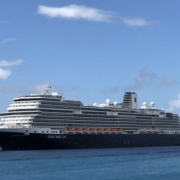 Creators Syndicate
Creators Syndicate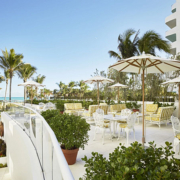 The Washington Post
The Washington Post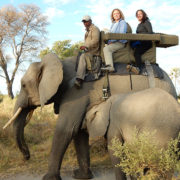 Physician's Money Digest
Physician's Money Digest The Washington Post
The Washington Post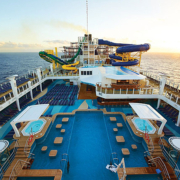 The Washington Post
The Washington Post Physician's Money Digest
Physician's Money Digest Travel Tips and Trips
Travel Tips and Trips